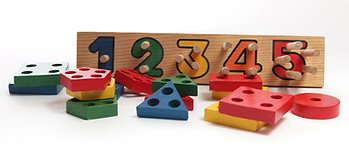
Logical thinking
-
Logical ordering in 3 sequence cards
-
Graphics

K1 teaching aid category
(Toddler level)
Comparing different
concepts
-
Capacity & many/few
-
Quantity 1 and many
-
Inside/outside
-
Big/small
-
Long/short
-
Empty/ full
Ordering & sorting
-
Ordering shapes in colour
-
Sorting objects through types
Ordering and logical thinking
-
Ordering graphics by colour
-
Logical ordering in 4 sequence cards
-
Find the difference game
K2 Teaching Aids Category (Preschool level)
Shapes
-
Cube and cuboid
-
Cylinders and spheres
-
3D animals
Sense of number
-
Number Grouping
-
Greater than and less than
Time
-
Days of the week


K3 teaching aid category
(Kindergarten level)
Ordering, logical thinking and diagram
-
Travel Shopping list
-
Birthday Party Shopping List
Time
-
My life in kindergarten
-
Understand time
Compare & measure
-
Understand the unit of volume "ml/L"
-
Measure length
Sense of number
-
Comparing two numbers within 1-100
-
Ordinal number
-
1 - 20 Odd and even numbers
-
Half and Quarter
10 Mathematic categories


-
Numbers and counting
-
Comparing and contrasting
-
Ordering and Measuring
-
Preceding number
-
Adding and Subtracting
-
Shapes
-
Time and Space
-
Graph
-
Sorting and classifying
-
Logical thinking and problem solving
兒童數學認知的發展 *Extract from Hong Kong Kindergarten Curriculum Guide(2017)


Toddlers who ages 3-4:
-
able to distinguish between two objects by their sizes, length, texture, hardness
-
begin to understand the concept of sequence, and able to make pattern with toy bricks or beads according to sequence
-
begin to know how to classify and match objects, and able to associate objects according to their uses such as shoes with socks, cups with plates
-
able to recite from 1 - 10
-
correctly count three to four objects
-
able assemble puzzles of six pieces
Preschoolers who aged 4-5 years old:
-
able to place furniture according to the appropriate room
-
able to identify different types from objects
-
begin to understand the concept of time, and be able to tell what usually do in the morning, afternoon and evening
-
understand position and speed, such as: before and after, fast and slow, in the middle, first, last, etc.
-
able to recite from 1 - 20
-
correctly count up to ten objects
-
able to assemble puzzles of eight pieces

Kindergarteners who aged 5-6 years:
-
able to arrange objects of different lengths, heights, widths or sizes in the correct order easily
-
able to count 20 objects and write up to 20
-
able to point out the order and position of objects, such as: first, second
-
understand the difference between "half of a piece" and "one full piece"
-
able to do simple addition and subtraction
-
begin to understand the calendar and time, and be able to tell the year, month, day and week.
-
able to tell the time, such as: three o'clock, four o'clock if they have taught
